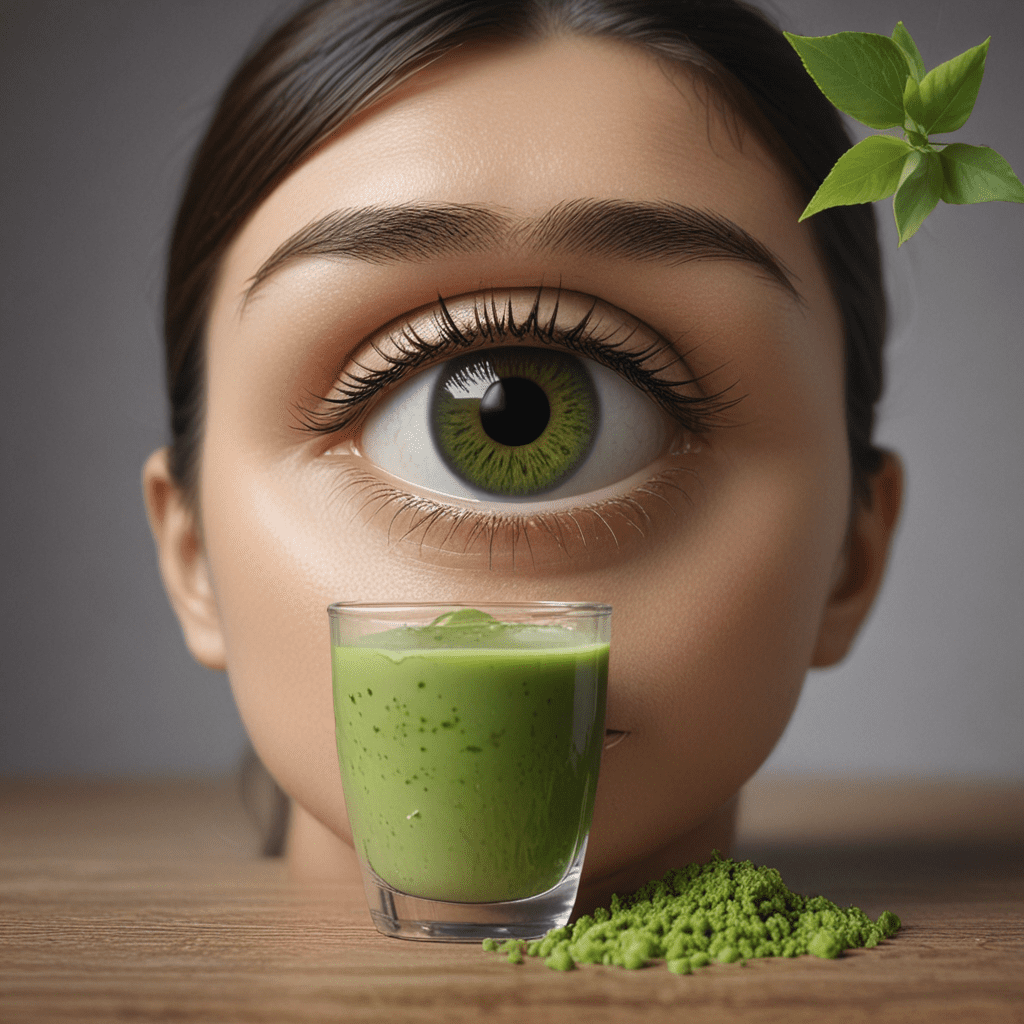
Introduction: Matcha and its Potential Impact on Eye Health
In the realm of traditional teas, matcha, a finely ground green tea powder, stands out with its unique properties and potential health benefits. While matcha has been celebrated for its invigorating effects and antioxidant capacity, recent research has shed light on its potential role in maintaining eye health. This article delves into the evidence-based connections between matcha and healthy vision, exploring how this green elixir may protect and preserve our precious eyesight.
Understanding Matcha: A Green Tea with Unique Properties
Matcha, a shade of vibrant green, is meticulously crafted from shade-grown tea leaves. Unlike conventional green tea, the entire tea leaf is consumed, providing a concentrated source of nutrients. Matcha boasts an impressive array of antioxidants, including catechins and chlorophyll, which contribute to its distinct flavor and potential health benefits. These compounds play a crucial role in combating oxidative stress, a major factor in age-related eye diseases.
Antioxidant Power of Matcha: Protecting Against Oxidative Stress
Oxidative stress, caused by an imbalance between free radicals and antioxidants, is implicated in the development of various eye diseases. Matcha, with its abundant antioxidants, acts as a shield against these damaging free radicals. Catechins, the most prevalent antioxidants in matcha, scavenge free radicals, neutralizing their harmful effects on delicate eye tissues. This antioxidant defense system helps protect the eyes from oxidative damage, promoting long-term ocular health.
Eye Protection from Free Radicals: How Matcha Battles Disease
The antioxidant properties of matcha extend beyond neutralizing free radicals. Catechins, particularly epigallocatechin gallate (EGCG), have demonstrated anti-inflammatory and anti-angiogenic effects. Chronic inflammation and abnormal blood vessel growth are implicated in several eye diseases. By combating these underlying mechanisms, matcha may help prevent or slow the progression of ocular conditions.
Catechins in Matcha: Fighting Inflammation for Ocular Health
Inflammation plays a significant role in the development of eye diseases such as uveitis, conjunctivitis, and dry eye syndrome. Catechins present in matcha exhibit anti-inflammatory properties, reducing inflammation and alleviating associated symptoms. Matcha's ability to combat inflammation may contribute to maintaining ocular surface health and preventing inflammatory eye conditions.
Matcha and Age-Related Macular Degeneration: Prevention and Management
Age-related macular degeneration (AMD) is a leading cause of vision loss in older adults. Studies suggest that matcha's potent antioxidant and anti-inflammatory properties may play a protective role against AMD. The high concentration of lutein and zeaxanthin, carotenoids found in matcha, further contributes to macular health by filtering harmful blue light and protecting retinal cells from damage.
Glaucoma and Matcha: Reducing Intraocular Pressure
Glaucoma, characterized by increased intraocular pressure (IOP), is a major risk factor for vision loss. Matcha consumption has been linked to a reduction in IOP, offering potential benefits for individuals with glaucoma. The catechins in matcha may improve blood flow and reduce inflammation in the eye, contributing to lower IOP and preserving vision.
Matcha and Cataracts: Inhibiting Protein Aggregation
Cataracts, a clouding of the eye's lens, are the leading cause of blindness worldwide. Matcha's antioxidant properties may help inhibit protein aggregation, a process that contributes to cataract formation. By preventing protein clumping, matcha may play a role in delaying the onset and progression of cataracts.
Dietary Considerations: Incorporating Matcha into a Healthy Diet
Incorporating matcha into a healthy diet is simple and convenient. Matcha powder can be whisked into hot water or blended into smoothies, juices, and baked goods. It can also be added to desserts and confectionery for a boost of flavor and nutrients. Matcha consumption should be moderated to avoid potential side effects associated with excessive caffeine intake.
Conclusion: The Promising Role of Matcha in Maintaining Vision Health
Matcha, with its rich antioxidant and anti-inflammatory properties, shows promise as a potential ally in maintaining eye health. Its ability to protect against oxidative stress, combat inflammation, and inhibit protein aggregation may help prevent or slow the progression of various eye diseases. While further research is warranted to fully elucidate its benefits, incorporating matcha into a balanced diet may contribute to long-term ocular well-being.
FAQs
Q: How much matcha should I consume for eye health?
A: Moderate consumption of matcha is recommended. Consult with a healthcare professional to determine the appropriate dosage for your individual needs.
Q: Can matcha replace conventional green tea for eye health?
A: Matcha provides a concentrated source of antioxidants compared to conventional green tea. While both offer benefits, matcha may have a more significant impact on eye health due to its higher nutrient content.
Q: Are there any side effects of matcha consumption?
A: Excessive consumption of matcha may lead to side effects associated with caffeine, such as anxiety, insomnia, and stomach upset. It's important to moderate intake and be aware of potential caffeine sensitivity.


